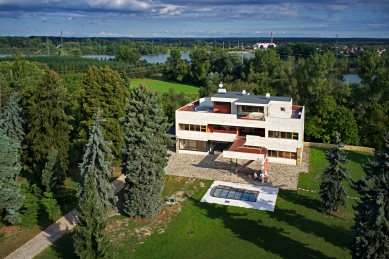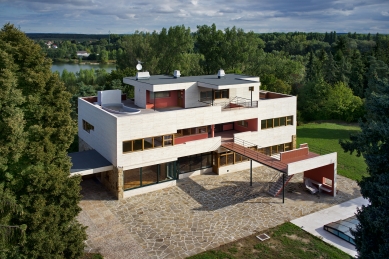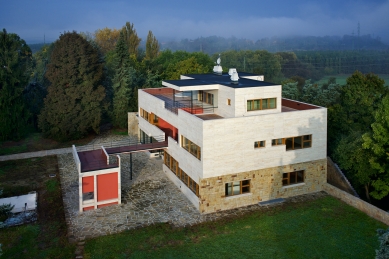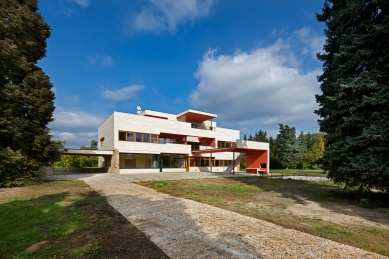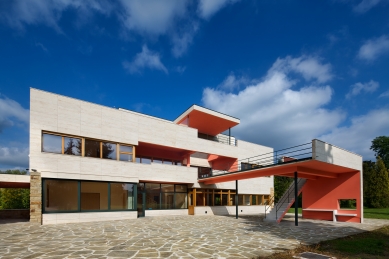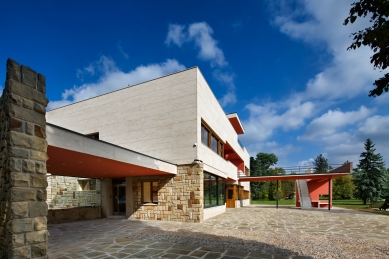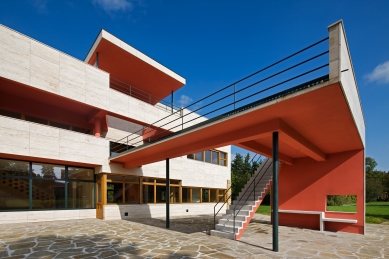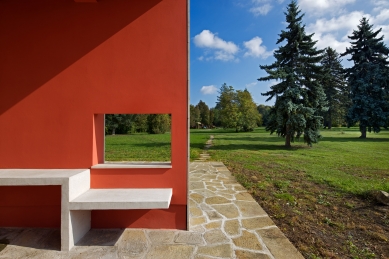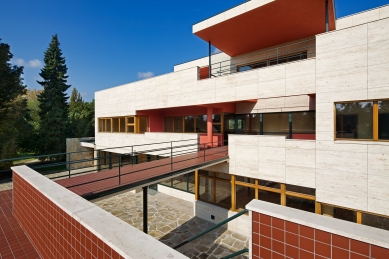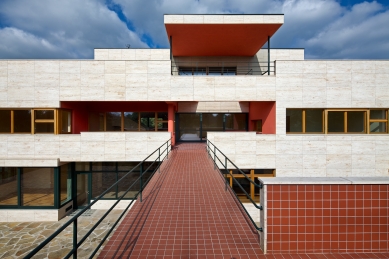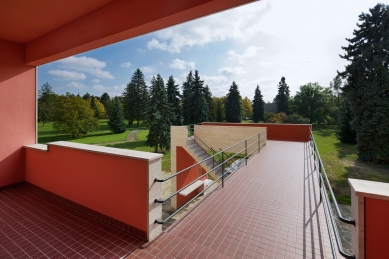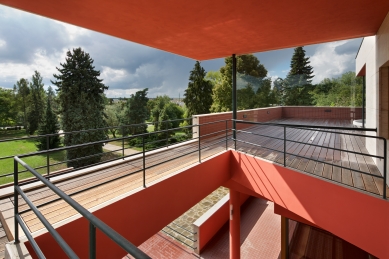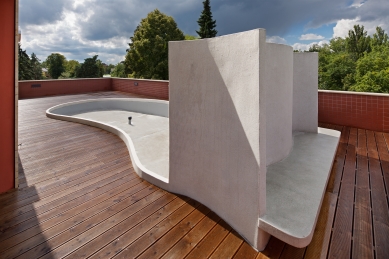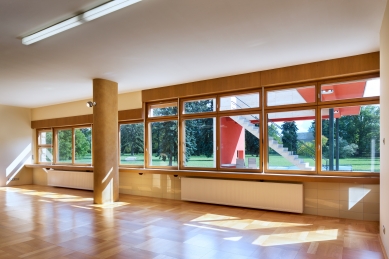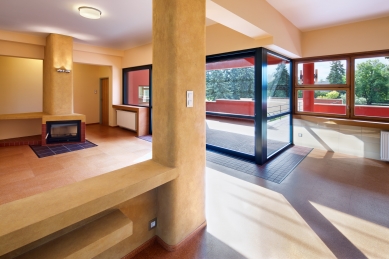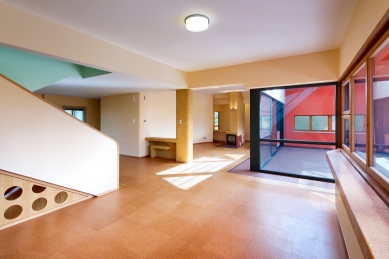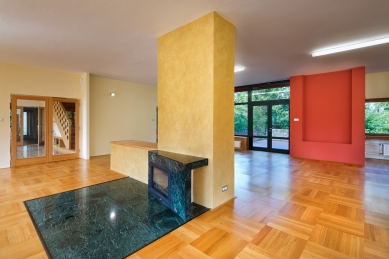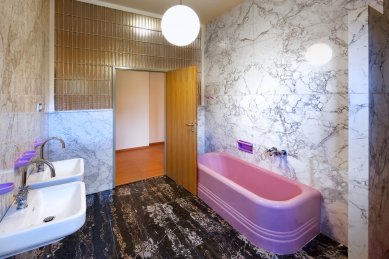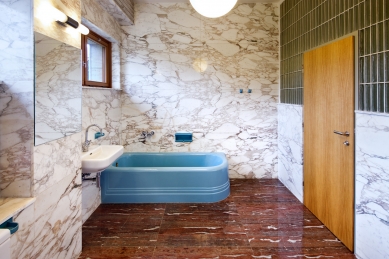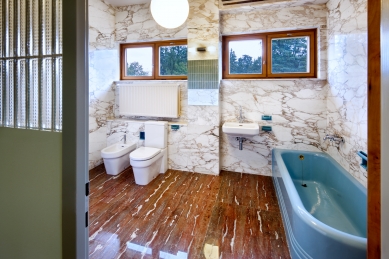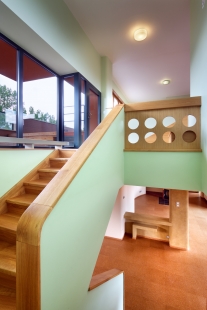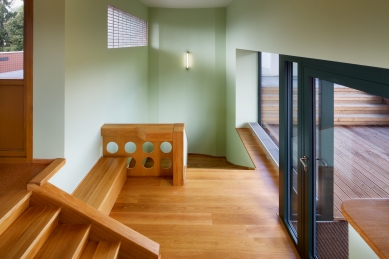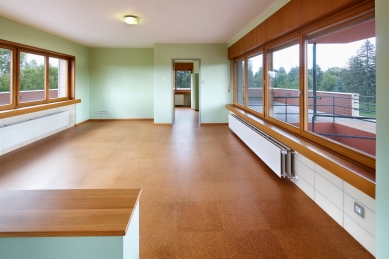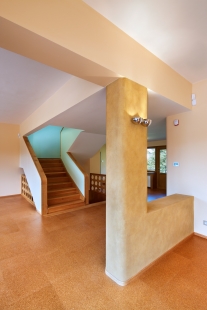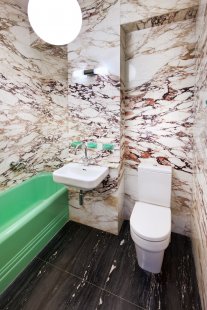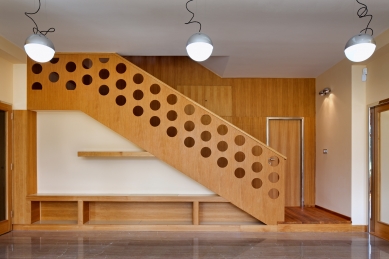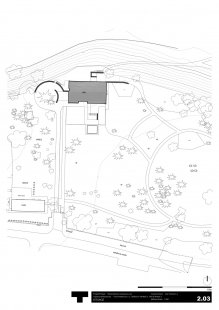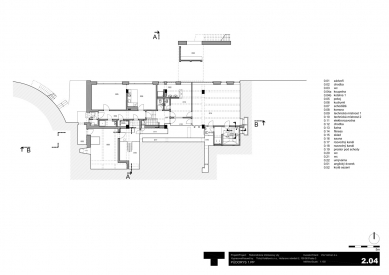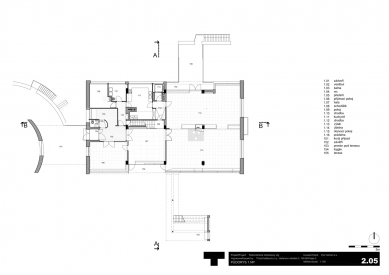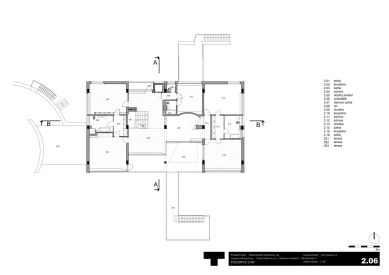
Reconstruction of the Volman Villa

When one mentions Volman's villa, those who know it recall more than just a functionalist object from the late 1930s (architects Karel Janů and Jiří Štursa, 1938-39 - editor's note.). They envision a sprawling English park in the neighborhood of a prosperous factory, a beautiful dream that became a reality. A villa in a park. What a beautiful theme for an architect, how appealing for someone searching for the ideal home. However, the complex with the villa of industrialist Josef Volman is also a memento of how transient a dream can be. Forty years of neglect, and the house and garden transformed into what only vaguely resembles the pre-war ideal. A crumbling object in a place that once welcomed dignitaries from all over the country, a overgrown park where Volman's daughter galloped on horseback, and a gardening colony formed from the former orchard.
By a twist of fate, someone was found who decided to breathe life into the nearly forgotten dream. It turns out that the concept of the entire complex, encompassing the scope of its original activities, where the production operation is complemented by a spacious park, greenery designated for recreation, and housing, is a timeless and still relevant idea.
In the case of Volman's original intention, the location above the meander of the Elbe river is also appealing. At a time when the existing fully grown vegetation did not exist, the villa rose on a promontory above the river, balancing on the edge of the romantic landscape of the Elbe with its numerous ponds and floodplain vegetation, contrasting with the artificially established park and maintained grassy areas.
However, it seems that it was not only about the location of the villa. Let us closely observe the line of the terrain edge, and we will find that the entire composition likely began at the end of Na Nábřeží street and ended in the meadows towards Toušen. In connection with the expansion of the company, Volman faced the task at the turn of the 20s and 30s to solve not only the location of the continuously expanding production but also the accompanying buildings, including administration, technical preparation, and last but not least, housing for employees. He approached the task not only with the rationality characteristic of him but also with generosity and foresight. And it was precisely at the aforementioned terrain edge, which seemed to follow the factory's layout, that the buildings of construction and administration appeared, along with the villa – a representative object for the company's management, a long enclosing wall lining the orchard, and finally, a hunting lodge for retreats and recreation.
In this composition, there are places that, in our opinion, were still waiting for their use. Due to the events after 1945, they remained empty, but we accepted the interest in the construction and rehabilitation of the complex as a challenge to understand and continue in the spirit of what was surely not coincidentally created composition (about the houses in the park and the hall of CZ TECH in other locations). However, this does not apply to the villa itself. On the contrary, with the support of its owners, we subjected it over ten years to a detailed examination with a team of historians, restorers, and specialists in unconventional technologies. Subsequently – after a responsible discussion with preservationists, among whom we should especially highlight Dr. Pavel Kroupa from the National Heritage Institute of Central Bohemia – we prepared a project for repairs, which was then gradually realized in small parts. This piecing together fragments and supplementing them with parts lost in history or demanded by the present was an incredibly time-consuming task. Perhaps for this reason, despite the fact that Volman's villa was one of the first projects of the office, as of summer 2013 it was not in a condition that would allow it to be presented. But it is just a matter of months before Volman's entire dream will be brought back to life.
By a twist of fate, someone was found who decided to breathe life into the nearly forgotten dream. It turns out that the concept of the entire complex, encompassing the scope of its original activities, where the production operation is complemented by a spacious park, greenery designated for recreation, and housing, is a timeless and still relevant idea.
In the case of Volman's original intention, the location above the meander of the Elbe river is also appealing. At a time when the existing fully grown vegetation did not exist, the villa rose on a promontory above the river, balancing on the edge of the romantic landscape of the Elbe with its numerous ponds and floodplain vegetation, contrasting with the artificially established park and maintained grassy areas.
However, it seems that it was not only about the location of the villa. Let us closely observe the line of the terrain edge, and we will find that the entire composition likely began at the end of Na Nábřeží street and ended in the meadows towards Toušen. In connection with the expansion of the company, Volman faced the task at the turn of the 20s and 30s to solve not only the location of the continuously expanding production but also the accompanying buildings, including administration, technical preparation, and last but not least, housing for employees. He approached the task not only with the rationality characteristic of him but also with generosity and foresight. And it was precisely at the aforementioned terrain edge, which seemed to follow the factory's layout, that the buildings of construction and administration appeared, along with the villa – a representative object for the company's management, a long enclosing wall lining the orchard, and finally, a hunting lodge for retreats and recreation.
In this composition, there are places that, in our opinion, were still waiting for their use. Due to the events after 1945, they remained empty, but we accepted the interest in the construction and rehabilitation of the complex as a challenge to understand and continue in the spirit of what was surely not coincidentally created composition (about the houses in the park and the hall of CZ TECH in other locations). However, this does not apply to the villa itself. On the contrary, with the support of its owners, we subjected it over ten years to a detailed examination with a team of historians, restorers, and specialists in unconventional technologies. Subsequently – after a responsible discussion with preservationists, among whom we should especially highlight Dr. Pavel Kroupa from the National Heritage Institute of Central Bohemia – we prepared a project for repairs, which was then gradually realized in small parts. This piecing together fragments and supplementing them with parts lost in history or demanded by the present was an incredibly time-consuming task. Perhaps for this reason, despite the fact that Volman's villa was one of the first projects of the office, as of summer 2013 it was not in a condition that would allow it to be presented. But it is just a matter of months before Volman's entire dream will be brought back to life.
Architectural office TaK
The English translation is powered by AI tool. Switch to Czech to view the original text source.
7 comments
add comment
Subject
Author
Date
Materialy
03.12.17 09:35
snová rekonstrukce
karel doležel
06.12.17 05:58
Barvy
Ivana
07.12.17 03:47
barvy
ježek
08.12.17 05:19
barvy
JH
08.12.17 10:04
show all comments


